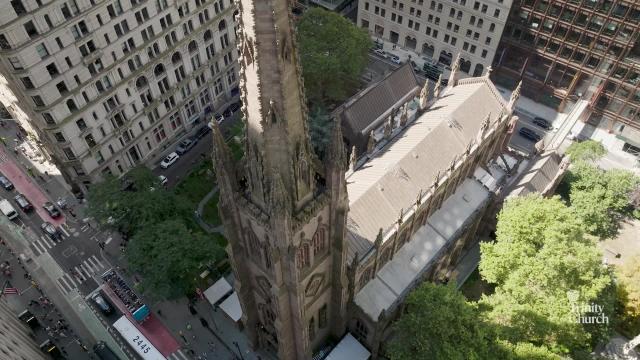George Washington’s 1789 Inauguration

While July 4, 1776 marks the date the Declaration of Independence was approved by Congress, it wasn't until April 30, 1789 that the United States swore in its first president under the Constitution. Down the street from Trinity Church, George Washington stood on the portico at Federal Hall, placed his hand on a bible borrowed from the local Masonic lodge, and took the presidential oath of office. The oath was administered by Chancellor of the State of New York, Robert Livingston, who then turned to the crowd and shouted, “Long live George Washington, President of the United States!” As the crowd cheered, Washington turned and walked into the senate chamber to deliver his inaugural address.
Washington delivering his inaugural address April 1789 in the old city hall, New York / painted by T.H. Matteson; engraved on steel by H.S. Sadd; published by John Neale, 56 Carmine Street, 1849, printed by Neale & Pate.
After addressing Congress, a weary looking Washington walked up Broadway between rows of saluting militiamen to St. Paul’s Chapel. Martha Washington, as well as both houses of Congress accompanied the new President to the chapel, where the service was presided over by the Episcopal Bishop of New York, Samuel Provoost.
Painting of the Great Seal of the United States on display in St. Paul's Chapel
A canopied pew on the north side of St. Paul's Chapel was reserved for George Washington and his family. He continued to attend services at St. Paul’s until at least August 1790, when the capital of the United States was moved to Philadelphia. On the wall beside the pew hung a painting of one of the earliest known representations of the Great Seal of the United States, commissioned by Trinity's Vestry in 1789 to commemorate Washington’s inauguration. Depicted in this verison of the seal is a turkey, favored by Benjamin Franklin, rather than the bald eagle, which became the national symbol. Although the pew has been removed, the painting is still displayed in its original location.







